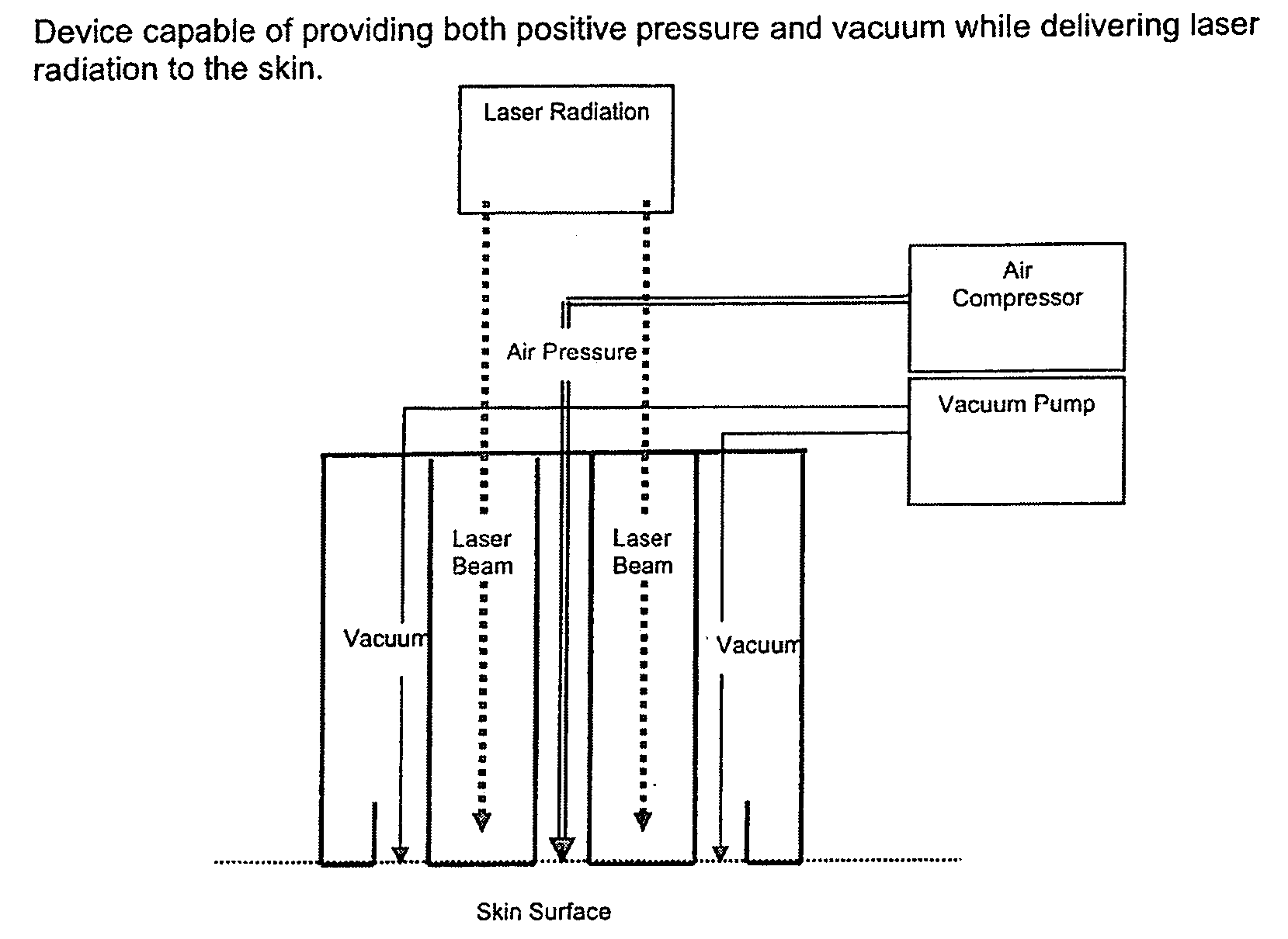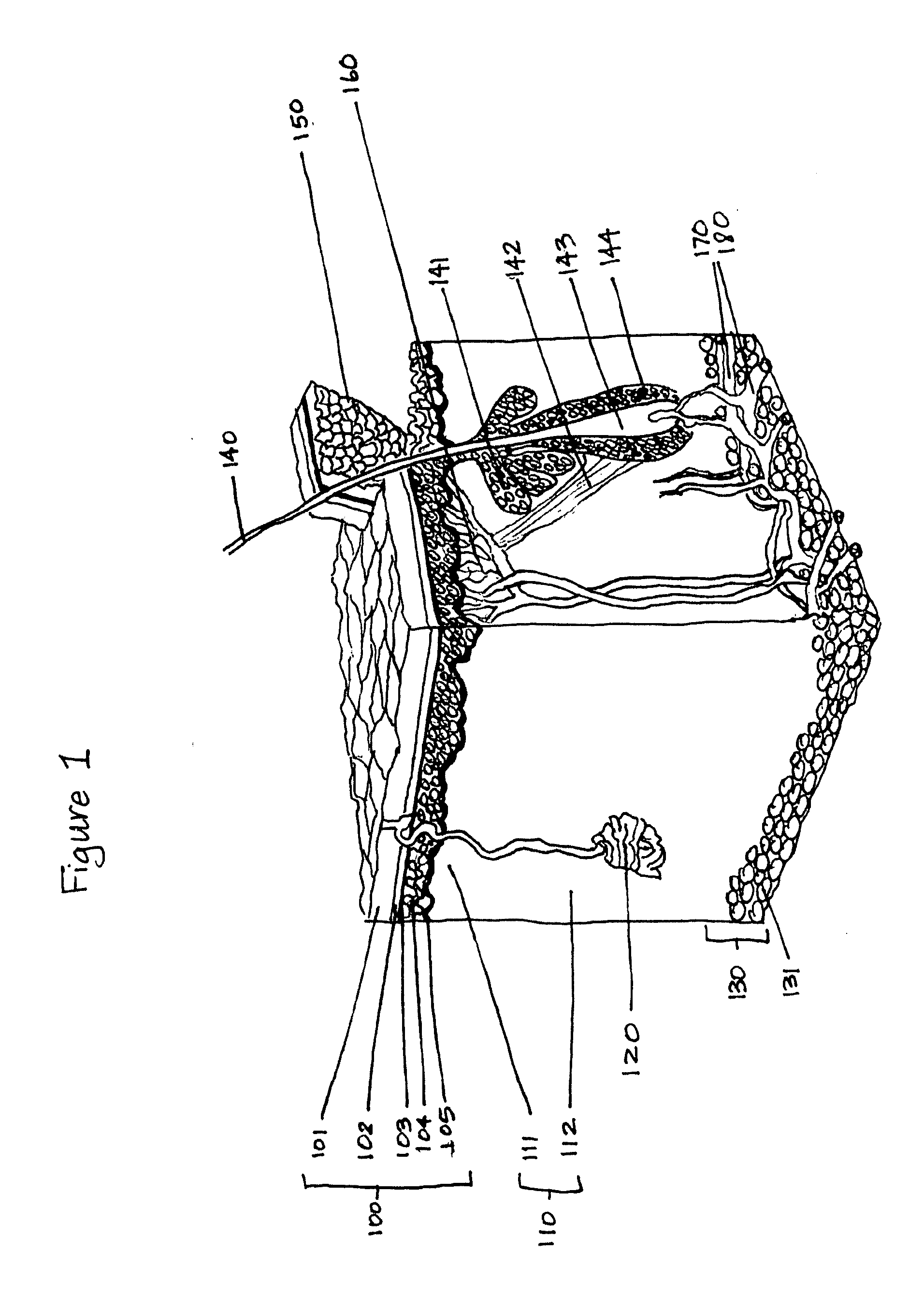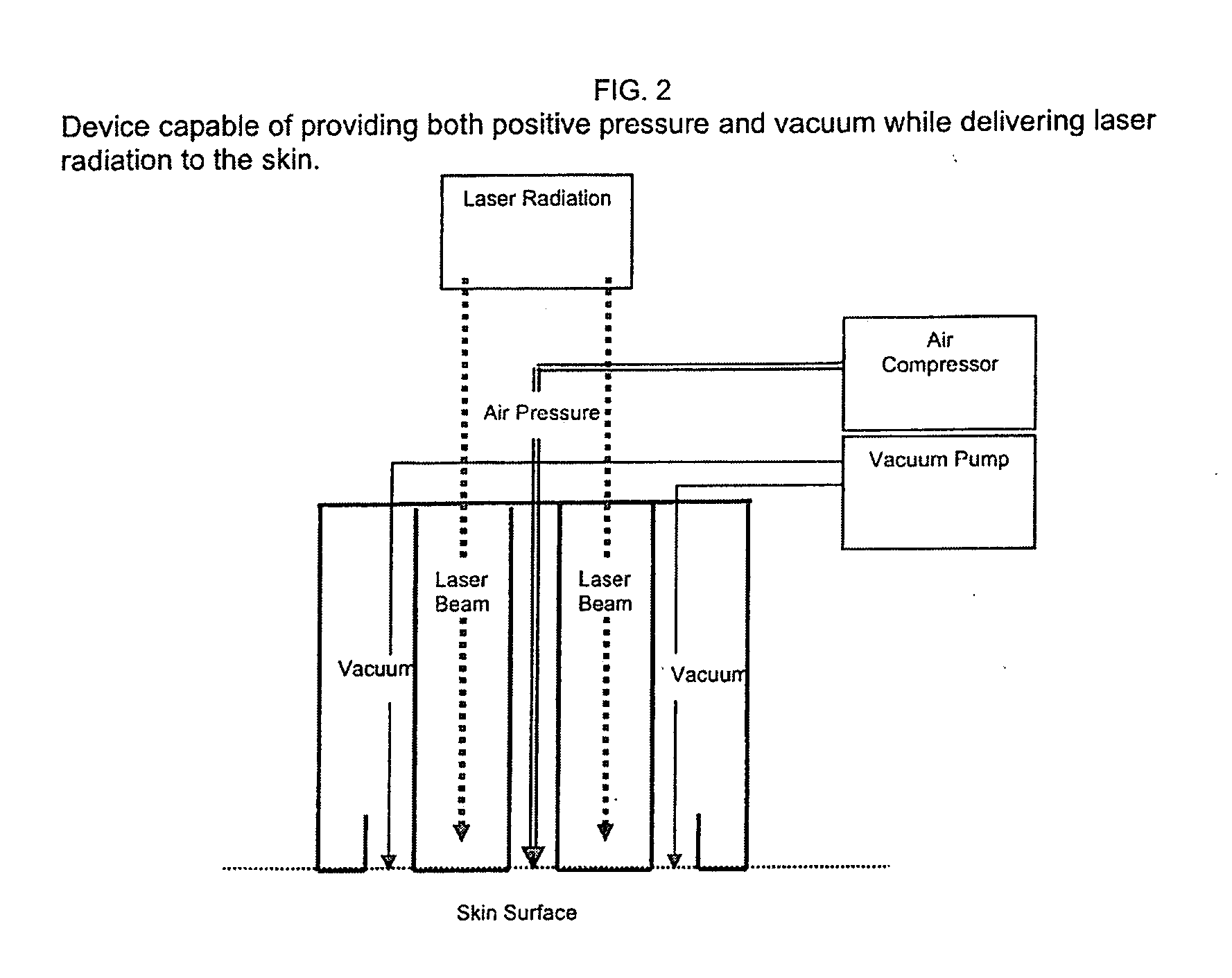Methods of increasing skin permeability by treatment with electromagnetic radiation
a technology of electromagnetic radiation and skin permeability, which is applied in the direction of biocide, heterocyclic compound active ingredients, surgery, etc., can solve the problems of not increasing permeability adequately, limiting the utility of topical administration and topical formulation of active substances, and affecting the skin, so as to increase skin permeability, increase the uptake of active substances, and improve skin permeability
- Summary
- Abstract
- Description
- Claims
- Application Information
AI Technical Summary
Benefits of technology
Problems solved by technology
Method used
Image
Examples
example 1
Comparison of the Surface of Treated and Untreated Skin
[0160]In this example, a series of photographs of the outer surface of human skin were made using a scanning electron microscope. In FIGS. 3A-3F, the skin is shown before and after fractional laser treatment to show the pores produced in the stratum corneum by the fractional laser treatment. FIGS. 3A and 3B show, at different levels of magnification, skin that has not been treated with fractional laser radiation. The normal structure of the stratum corneum is visible, including naturally occurring pores and the normal flaking of the top layer of the stratum corneum. FIGS. 3C-3F show, at four levels of magnification, skin that has been treated in vitro with fractional laser radiation using a 1550 nm laser, a pulse energy of 20 mJ, a 60 μm treatment zone size, and the non-contact delivery mode. The naturally occurring pores and the normal flaking of the top layer of the stratum corneum remain visible. A large number of pores creat...
example 2
Comparison of Skin Treated with Different Fractional Laser Treatments
[0161]Samples of excised human skin were treated in vitro using different fractional laser treatments before sectioning and staining to compare the effects of the treatments on the layers of the skin.
[0162]Procedure: Prior to laser treatment, each skin sample was trimmed to a size of 10 mm×60 mm and heated in between saline soaked gauze pads on a digital hot plate (Cole-Parmer Instrument Co., Vernon Hills, Ill.) until the skin surface temperature reached 98±3° F. The top layer of gauze was removed and the sample was treated at predetermined laser parameters. Immediately post-treatment, each sample was cut into smaller pieces and fixed in 10% v / v neutral buffered formalin (VWR International, West Chester, Pa.) overnight, for paraffin embedding and sectioning. The sectioned samples were stained with hematoxylin and eosin (H&E) and then imaged using a DM LM / P microscope and a DFC320 digital camera (Leica Microsystem, ...
example 3
Comparison of Skin Treated with Fractional Laser Treatments Using the Same Wavelength of Laser Radiation and Different Pulse Energies
[0164]Samples of excised human skin were treated in vitro with fractional laser treatments using the same wavelength of laser radiation and different pulse energies before sectioning and staining to compare the effects of the treatments on the layers of the skin. The procedure described in Example 2 was used to prepare, section and stain the skin.
[0165]FIG. 5 is a series of photographs of histological sections of skin treated using fractional laser treatments using a range of pulse energies. The skin was treated with 1550 nm laser radiation from an erbium doped fiber laser using a 260 μm treatment zone size, the contact mode of delivery, and pulse energies of 15 mJ, 47 mJ, and 85 mJ. The skin in FIG. 5A, treated with 15 mJ, shows the treatment has produced coagulation in the epidermis and dermis but did not create a vacuole in the epidermis. The skin i...
PUM
| Property | Measurement | Unit |
|---|---|---|
| Fraction | aaaaa | aaaaa |
| Length | aaaaa | aaaaa |
| Length | aaaaa | aaaaa |
Abstract
Description
Claims
Application Information
 Login to View More
Login to View More - R&D
- Intellectual Property
- Life Sciences
- Materials
- Tech Scout
- Unparalleled Data Quality
- Higher Quality Content
- 60% Fewer Hallucinations
Browse by: Latest US Patents, China's latest patents, Technical Efficacy Thesaurus, Application Domain, Technology Topic, Popular Technical Reports.
© 2025 PatSnap. All rights reserved.Legal|Privacy policy|Modern Slavery Act Transparency Statement|Sitemap|About US| Contact US: help@patsnap.com



